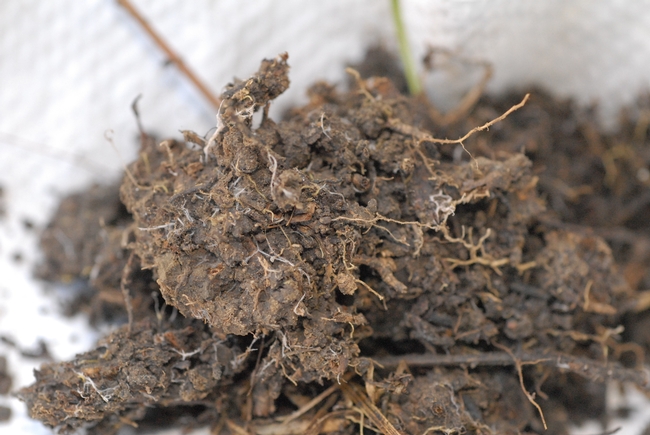
Posts Tagged: myths
Myths of the Soil
Washington State University and UCCE Ventura County, respectively
Soils found in home gardens and public landscapes usually bear little resemblance to the original soil. Native soils are formed through centuries of interactions between climatic factors, local environmental factors, and the biological components of the soil. In contrast, soils found in developed areas are often distinctly layered, compacted, and artificially amended. Commercial topsoils, which are often called designed soils or landscape fill, bear little resemblance to natural topsoil as they generally contain abundant organic material and sand but relatively little topsoil. Unfortunately, many gardeners and landscape professionals are unaware of these differences and how they affect soil functionality and plant life. This lack of understanding, combined with popular soil management practices and products, can create soil conditions that are injurious to soil and plant life. In this article we deconstruct four common soil management myths and offer better methods to manage urban soils sustainably.
Most people with a personal or professional interest in gardens and landscapes are familiar with the soil triangle. The relative percentages of clay, silt and sand determine soil texture and function. Uncompacted sandy and silty soils are well drained, but nutrient poor; uncompacted clay soils are nutrient rich but have slow drainage. The perfect soil for growing plants is one that has adequate drainage and nutrient availability (Handrek and Black, 2002). Such soils are loams and contain mixtures of clay, silt and sand. Natural soils also contain organic matter around 1-6% of the total soil weight. Wetland soils, in contrast, have much higher levels of organic material. All of these natural soil types develop over centuries of interactions among climatic, geographic, environmental, and biological factors.
Read On:
Soil Myth Busting for Extension Educators: Reviewing the Literature on Soil Structure and Functionality
https://www.nacaa.com/journal/index.php?jid=1024

soil texture granular
Deconstructing Plant and Soil Myths
Washington State University and UCCE - Ventura County, respectively
Horticultural myths, found extensively in print and online resources, are passed along by uninformed gardeners, nursery staff, and landscape professionals. Occasionally myths are so compelling that they make their way into Extension publications, used by Master Gardeners as educational resources. In this article we deconstruct seven widespread gardening myths by way of reviewing research-based literature. We also provide scientifically sound alternatives to these gardening practices and products. Our hope is to arm Extension educators with the educational resources necessary to battle misinformation that ranges from the merely useless to that which is actively damaging to soils, plants, and the surrounding environment.
Home gardeners and landscape professionals are a rapidly growing audience for extension educators as they seek science-based information to support their activities. However, many are not familiar with current research and cannot assess whether the information they find in print, on the internet, or through social media is accurate. In addition, some products and practices are meant for agricultural production, not for maintaining home gardens and landscapes. The combination of misinformation and misapplied information means that this audience risks damaging their plants and soils through overuse of fertilizers, misuse of pesticides, and poor management practices.
The field of urban horticulture, including arboriculture, is expanding with new insights about plants and soils in residential and public landscapes. However, there are few Extension educators who have an academic background in environmental horticulture and may be as confused as the public about what constitutes sound, science-based recommendations.
The authors of this article are state Cooperative Extension educators and researchers with many years of experience in translating science for use by home gardeners and landscape professionals. Our goal is to assist other Extension educators by providing reliable information for them to share with the gardening and landscaping public.
The purposes of this literature review article are:
- to identify some common beliefs homeowners and landscape professionals have about managing landscape plants and soils;
- to provide a brief, science-based explanation on why these beliefs are not accurate;
- to provide links to published, peer-reviewed information that supports the explanation and can be distributed to clientele; and
- to suggest strategies based on current and relevant applied plant and soil sciences for managed landscapes.
And here is the article:
Garden Myth Busting for Extension Educators: Reviewing the literture on Landscape Trees
https://www.nacaa.com/journal/index.php?jid=885

roots shallow
